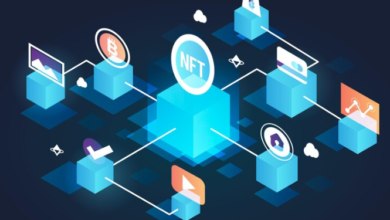Decentralized Finance (DeFi): A Guide to Financial Freedom

In recent years, a revolutionary concept has been transforming the landscape of traditional finance. This phenomenon is known as Decentralized Finance, or DeFi for short. DeFi signifies a significant change in how financial services are designed and accessed, offering individuals unprecedented control and opportunities to manage their finances. Let’s explore what DeFi is, its underlying principles, how it works, its benefits, and its potential to empower individuals toward financial freedom.
Understanding DeFi
DeFi is a decentralized financial system on the blockchain, unlike traditional finance, which relies on intermediaries like banks. Using networks like Ethereum, DeFi lets users interact directly with financial services via smart contracts, cutting out intermediaries to lower costs, boost transparency, and improve accessibility.
Key Principles of DeFi
1. Openness and Accessibility:
DeFi welcomes global participation without extensive documentation or intermediaries, which is accessible to anyone with an internet connection.
2. Interoperability:
DeFi protocols are designed to connect seamlessly, allowing different applications to leverage each other’s functionalities.
3. Transparency:
Operations and transactions in DeFi are recorded on a public blockchain, ensuring transparency and auditability.
4. Security:
DeFi applications benefit from blockchain’s security features, making them resistant to hacking and fraud.
5. Permissionless Innovation:
Developers can innovate freely, deploying new financial products and services without permission, fostering creativity in the ecosystem.
How DeFi Works
DeFi utilizes intelligent contracts, coded agreements that self-execute based on predefined conditions. These contracts power a range of financial functions, such as lending, borrowing, trading, and more, within DeFi applications.
A key aspect of DeFi is liquidity provision, where users contribute crypto assets to liquidity pools. These pools support decentralized exchanges (DEXs) and lending platforms, allowing providers to earn interest or fees from the platform.
Benefits of DeFi
DeFi brings several benefits over traditional finance:
1. Financial Inclusion:
It offers financial services to anyone with internet access, particularly benefiting underserved regions without traditional banking.
2. Reduced Costs:
DeFi lowers transaction and service fees by cutting out intermediaries.
3. Transparency and Security:
Operating on public blockchains ensures transparent and secure transactions.
4. Permissionless Access:
Participation in DeFi doesn’t need approval, democratizing access to financial tools.
5. Global Reach:
DeFi services are globally accessible, facilitating cross-border transactions and investments without constraints.
Examples of DeFi Applications
The DeFi ecosystem includes:
1. Decentralized Exchanges (DEXs):
Platforms like Uniswap and SushiSwap facilitate direct cryptocurrency trading from wallets without intermediaries.
2. Lending and Borrowing Platforms:
Services like Compound and Aave enable cryptocurrency lending, borrowing, and interest earning.
3. Stablecoins:
Stablecoins like Dai and USDC maintain value stability by pegging to fiat currencies, facilitating transactions, and lending in DeFi.
4. Decentralized Asset Management:
Platforms such as Yearn Finance automate yield farming strategies for user returns.
5. Derivatives and Prediction Markets:
Projects like Synthetix offer decentralized synthetic assets and prediction markets.
Risks and Challenges
DeFi presents opportunities along with risks:
1. Smart Contract Risks:
Vulnerabilities or bugs in smart contracts can result in financial losses.
2. Regulatory Uncertainty:
DeFi faces potential challenges across jurisdictions when operating in a regulatory gray area.
3. Market Volatility:
Crypto market fluctuations can impact user investments due to inherent volatility.
4. Liquidity Risks:
Certain DeFi protocols may encounter liquidity shortages or impermanent losses for liquidity providers.
Towards Financial Freedom with DeFi
DeFi can transform our approach to financial services, emphasizing openness, transparency, and permissionless innovation to empower individuals. To navigate DeFi effectively:
- Educate Yourself: Learn about DeFi protocols and associated risks.
- Start Small: Begin with modest investments, increasing exposure as confidence grows.
- Choose Reputable Platforms: Use trusted platforms and conduct due diligence before participating in DeFi activities.
Emerging Trends in DeFi
1. Cross-Chain Compatibility:
The DeFi ecosystem is expanding beyond Ethereum, with interoperability solutions like Polkadot and Cosmos enabling cross-chain asset transfers and interactions.
2. Decentralized Identity:
Projects like uPort and Sovrin are exploring decentralized identity solutions, allowing users to control their digital identities securely and privately within the DeFi ecosystem.
3. Integration with Traditional Finance:
Some DeFi platforms bridge gaps between decentralized and traditional finance by enabling fiat on-ramps, credit delegation, and integration with legacy financial infrastructure.
4. Automated Market Makers (AMMs):
AMMs like Balancer and Curve are evolving to optimize liquidity provision and minimize impermanent loss for liquidity providers.
DeFi Governance and DAOs (Decentralized Autonomous Organizations)
1. Community Governance:
Many DeFi protocols are transitioning towards decentralized governance, allowing token holders to play a role in decision-making processes such as protocol upgrades and adjustments to parameters.
2. DAOs in DeFi:
DAOs enable collective decision-making and fund allocation within the DeFi ecosystem. Projects like MakerDAO and Compound have active DAOs governing their protocols.
Environmental Impact and Sustainability
1. Energy Efficiency:
The focus on environmental impact from blockchain technologies has driven advancements in creating more energy-efficient consensus methods like proof-of-stake (PoS).
2. Carbon Offsetting:
Some DeFi projects are exploring carbon offsetting strategies to mitigate their carbon footprint, aligning with broader sustainability goals.
Institutional Adoption and Regulation
DeFi’s broader impact includes:
1. Institutional Interest:
Traditional finance is increasingly exploring DeFi for efficiency and potential returns, which could lead to broader adoption.
2. Regulatory Developments:
Evolving regulatory frameworks address DeFi risks while promoting consumer protection and innovation.
3. Financial Literacy Initiatives:
Educational efforts in DeFi enhance cryptocurrency and blockchain literacy, empowering informed decision-making.
4. User Experience Enhancements:
Projects refine DeFi applications to attract mainstream users and drive adoption.
Conclusion
Decentralized finance represents a dynamic and evolving ecosystem at the intersection of finance, technology, and governance. While challenges persist, DeFi’s transformative potential to democratize finance and empower individuals cannot be overlooked. As the ecosystem continues to mature, embracing innovation, sustainability, and regulatory clarity will be vital to realizing DeFi’s full promise and achieving broader financial freedom for individuals worldwide.
Explore www.intogeeks.com for more related topics.



